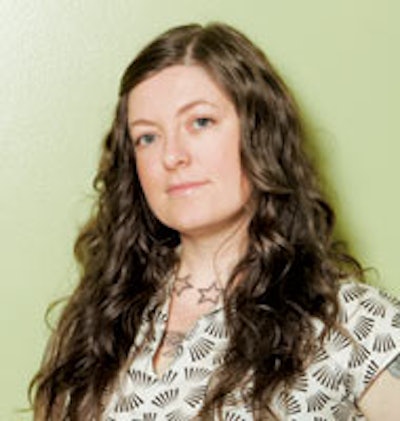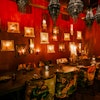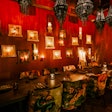
Faythe Levine is the co-author of Handmade Nation: The Rise of DIY, Art, Craft, and Design, a new book published by Princeton Architectural Press that she co-wrote with fellow crafter Cortney Heimerl. A polymath in the craft field—and a champion of indie artisans and designers—Levine operates Paper Boat, a boutique-gallery in Milwaukee, which specializes in handcrafted objects. A designer of postcards, accessories, and curious artistic objects, she set up the large-scale craft fair Art vs. Craft in 2004 and then got inspired to document the movement on film. The documentary Handmade Nation showcases more than 30 artists breathing new life into the craft community.
How would you describe the craft phenomenon?
I guess what I consider the D.I.Y. indie craft movement is a community of people who have the common goal of being creatively motivated and wanting to do things themselves, share information, network, and have an open dialogue about making.
Why do you think there’s been such interest among artists and even untrained crafters to get involved in the movement?
Sites like Etsy have made it incredibly simple for someone with access to a computer and a digital camera to have a Web shop. The accessibility and user-friendly aspect of that is a big part of it. People see artists and other makers doing things that they have the ability or skill [to do], or maybe feel like they want to try, and the whole point of the D.I.Y. movement is “Well, I can do that, too.”
How did you go about organizing Art vs. Craft?
I had organized some events without any formal training, but if you’re an organizer, you just kind of know that you can do it. I basically just put out an open call through forums that I was familiar with and flyers at coffee shops around my city. It was a big event—I didn’t start small—and there were 100 spaces available. I got more than 100 applications, and since then, I get three to four times that. I like the idea of bringing in new work as well as showcasing local talent. I found local sponsors and did media trade. I got 3,000 to 4,000 people through the doors in one day.
What made you want to do a documentary?
I heard about an indie craft fair in Chicago [the Renegade Craft Fair in 2003], and I applied to be a vendor. I met a lot of other makers I had only known online. I realized there was something big going on. Over the course of the next two years and meeting all of these people at shows and running my business, I felt it was time to make sure things were documented properly before it changed too much. It was a one-camera documentary [that] I scheduled over weekends, and it was all independently funded. I already knew the people I wanted to talk with, but for the most part, it was an excuse to meet the people I wanted to meet in my community.
Why is there such a demand for handcrafted objects now?
We spend so much time online and moving so quickly throughout our day that having time to sit down and make something from beginning to end, and making these creative decisions as you go, is a really satisfying and fulfilling feeling. From the consumer standpoint, where there’s this “buy local” green movement going on, handmade craft really fits in with that as something you can support in your local community. That human connection and want for something unique that you can’t find in a mass-produced manner at a big box store isn’t going to go away. Even though we’re in an economic crisis, people are still willing to spend an extra dollar on becoming more conscious.



















